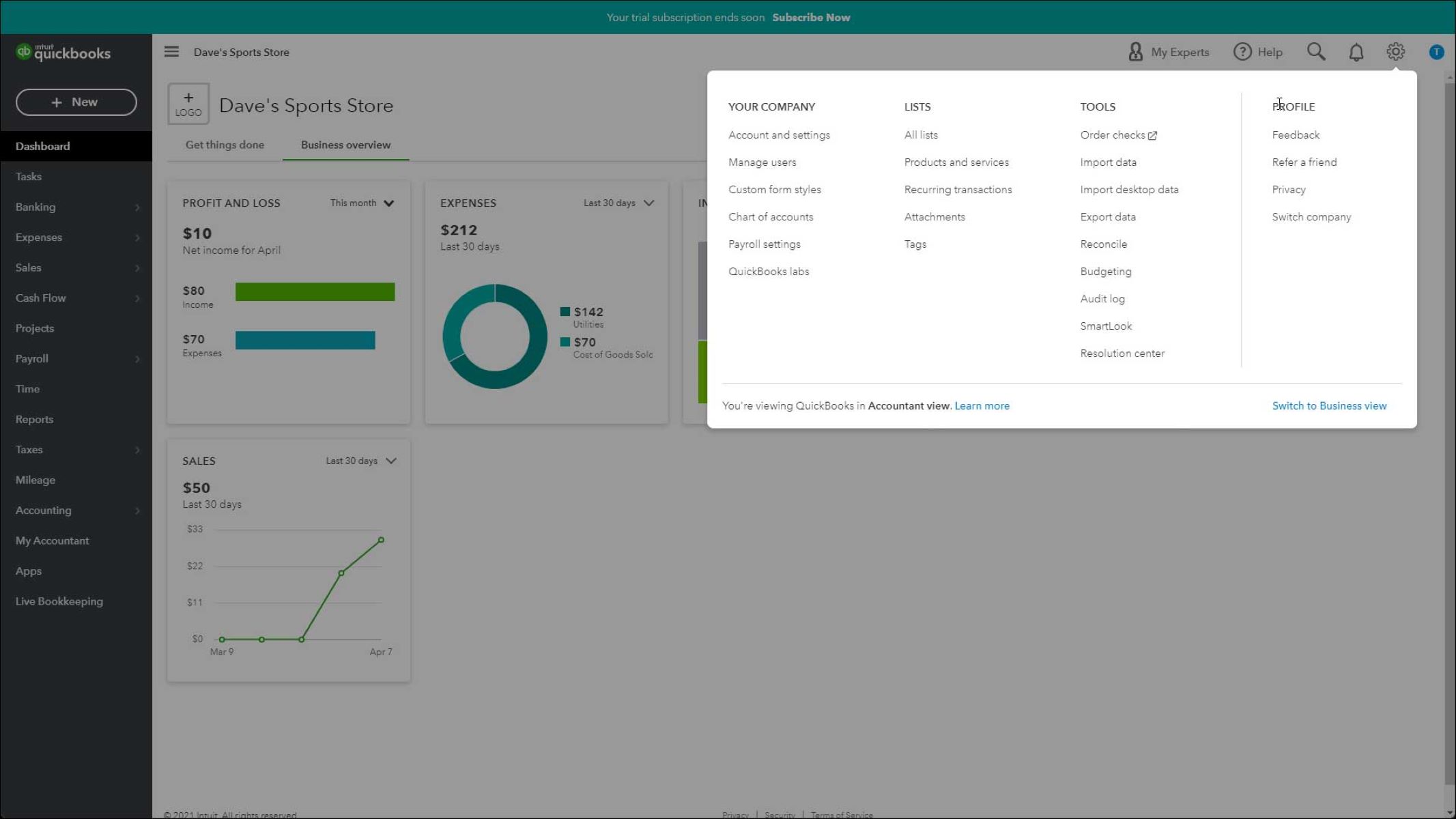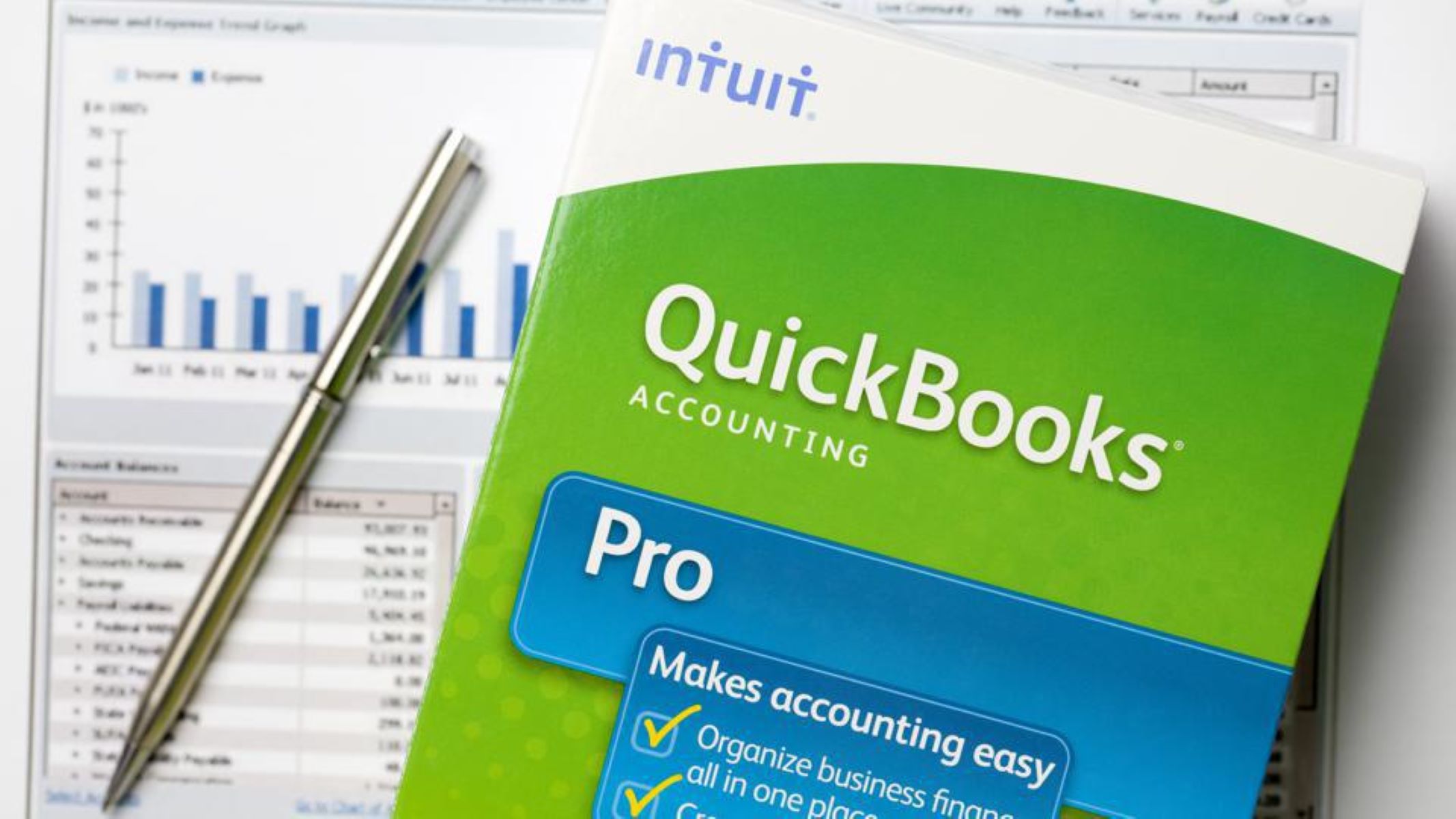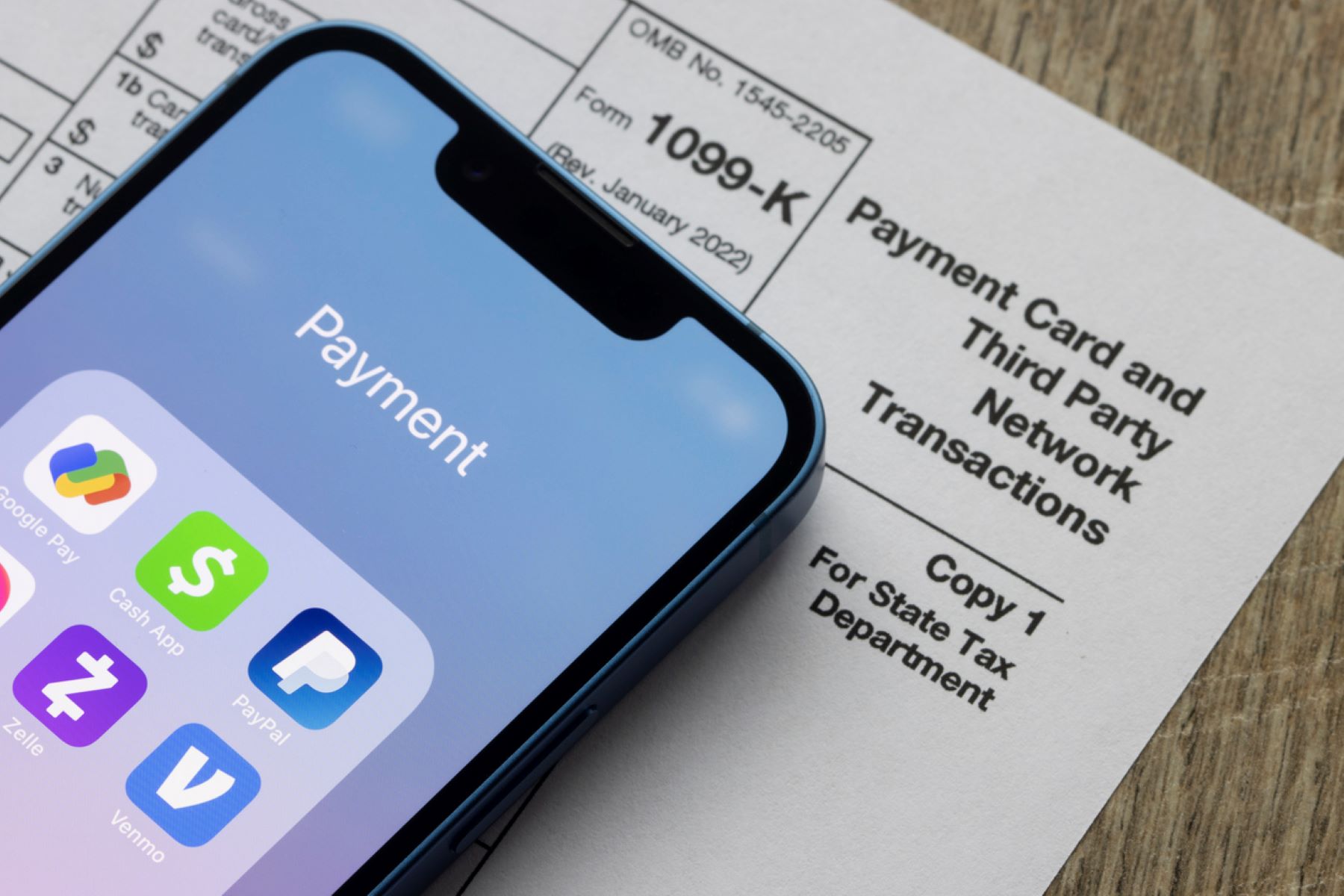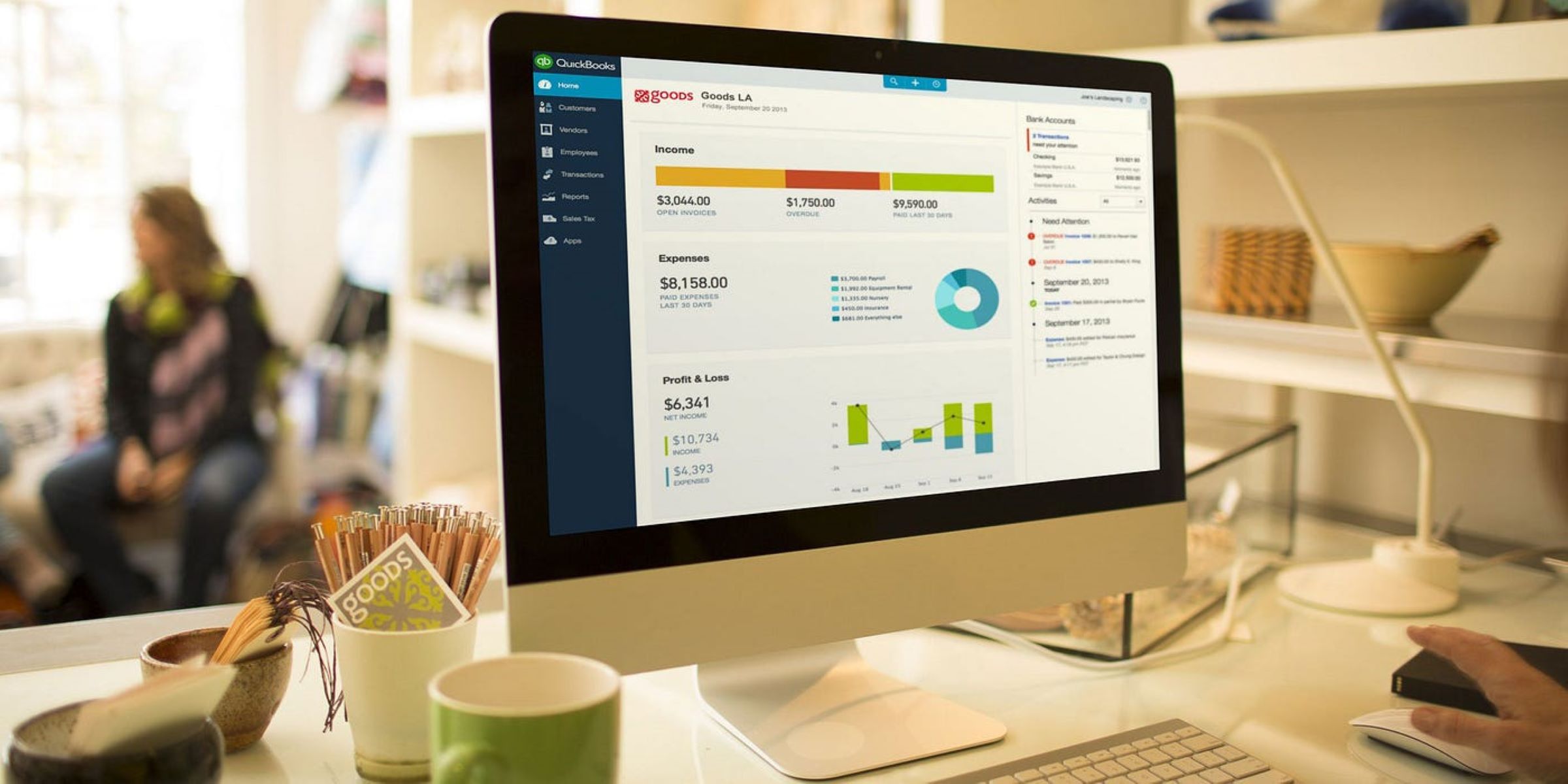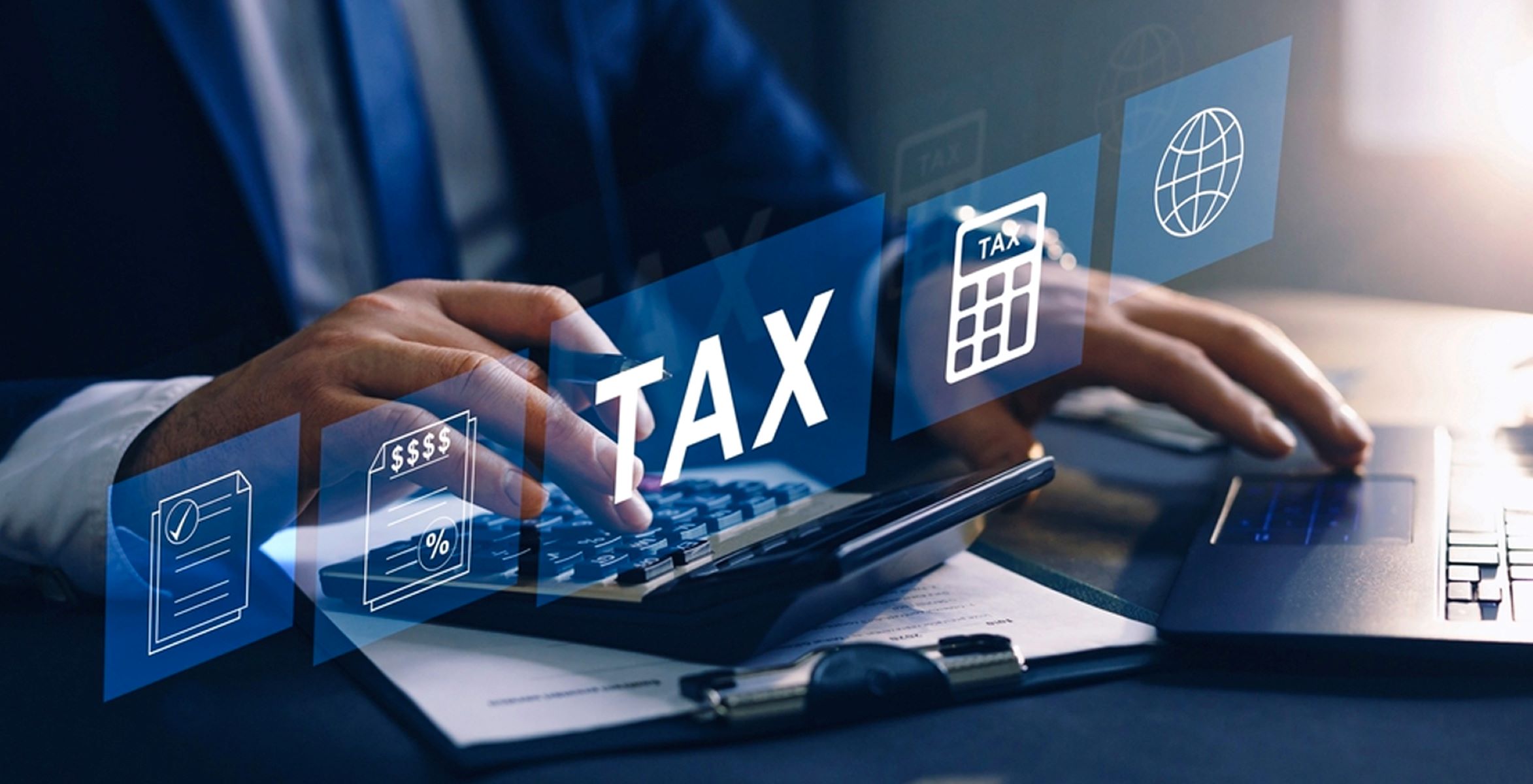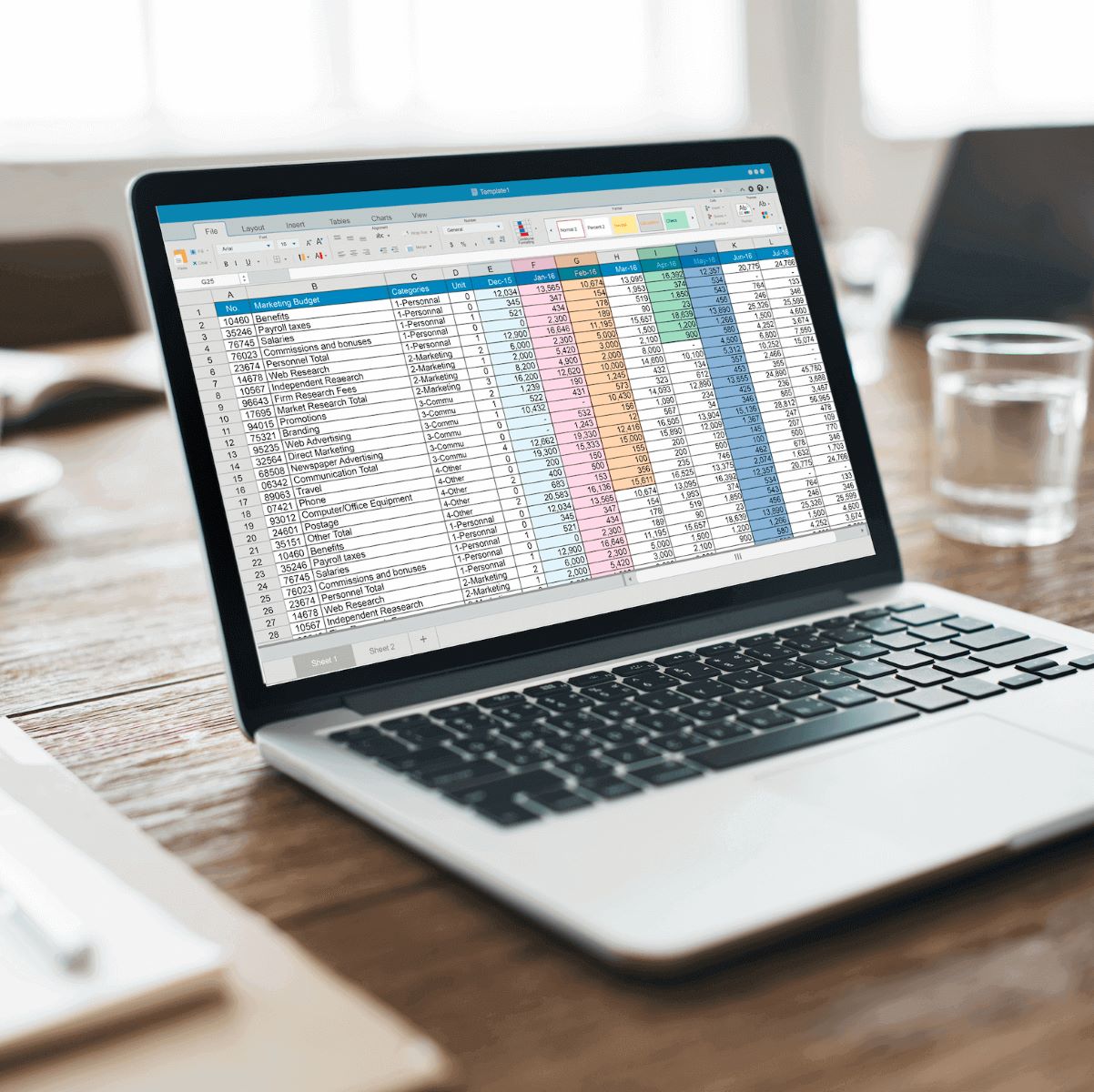Introduction
Welcome to QuickBooks Desktop, a powerful accounting software that helps businesses manage their finances efficiently. In this article, we will explore the various settings available in QuickBooks Desktop and how to access them. Understanding and customizing these settings is essential for tailoring QuickBooks to meet the specific needs of your business.
By accessing the settings, you can control various aspects of your QuickBooks experience, from financial preferences to report customization and user preferences. Whether you want to modify company preferences, set up payroll and employee settings, or manage your online services, QuickBooks provides a comprehensive range of options to cater to your business needs.
Understanding and utilizing the settings within QuickBooks Desktop is crucial for streamlining your accounting processes and ensuring accurate financial reports. By customizing these settings, you can save time, improve efficiency, and maintain accurate financial records.
Throughout this article, we will dive into each specific category of settings, explaining their significance and how to access and customize them. By the end of this guide, you will have a solid understanding of the various settings available in QuickBooks Desktop and be able to maximize its potential for your business.
Accessing Settings
Accessing the settings in QuickBooks Desktop is a straightforward process. Here’s how you can do it:
1. Launch QuickBooks Desktop on your computer and log in to your company file.
2. Once you are in the main dashboard, navigate to the top menu bar and click on the “Edit” tab.
3. From the dropdown menu that appears, select “Preferences”. This will open up the Preferences window.
4. In the Preferences window, you will find different categories of settings on the left-hand side. Click on a category to access its respective settings.
5. Within each category, you will see a list of specific settings that you can customize according to your business requirements.
6. To make changes to a setting, select the desired option and click on the “OK” or “Save” button to apply the changes.
It’s important to note that not all settings will be available to every user. Depending on your user role and access permissions, certain settings may be restricted or only accessible to designated administrators.
Now that you know how to access the settings, let’s explore the different categories of settings available in QuickBooks Desktop and what each of them entails.
QuickBooks Desktop Settings
QuickBooks Desktop offers a wide range of settings that allow you to customize various aspects of your accounting software. Let’s take a closer look at the different categories of settings available:
Company Preferences
Company Preferences encompass the overall settings that affect your entire company file. Here, you can configure default settings for features like inventory, sales tax, and time tracking. You can also set up reminders, default accounts, and preferences for handling multiple currencies or using the Accountant’s Copy feature.
Reports & Graphs
Under the Reports & Graphs settings, you have the ability to customize how reports and graphs are generated and displayed in QuickBooks. You can set preferences for report filters, memorized reports, report fonts, and specific report behaviors.
Sales & Customers
Within the Sales & Customers settings, you can define preferences related to sales forms like invoices, estimates, and sales receipts. You can customize options such as default payment terms, custom fields, and sales form automation.
Expenses & Vendors
In the Expenses & Vendors settings, you can configure preferences for expense-related activities, such as managing bills, purchase orders, and tracking expenses. You can also set up default expense accounts, payment terms, and vendor-specific settings.
Payroll & Employees
For businesses that utilize QuickBooks Desktop for payroll management, the Payroll & Employees settings are crucial. Here, you can set up payroll tax preferences, employee defaults, and customize payroll item lists.
Banking
The Banking settings allow you to configure preferences for bank feeds, bank reconciliation, and online banking transactions. This is where you can connect your bank accounts, set up rules for categorizing transactions, and manage your bank feeds.
These are just a few examples of the various categories of settings available in QuickBooks Desktop. Each category contains multiple settings that can be customized to suit the specific needs of your business.
Company Preferences
The Company Preferences settings in QuickBooks Desktop allow you to customize and tailor your accounting software to meet the specific needs of your business. These settings affect the overall functionality of your company file. Let’s explore some of the key preferences within this category:
General Preferences
Under General Preferences, you can set up defaults for your company’s financial and accounting preferences. This includes options such as your fiscal year, default date format, and decimal precision. You can also specify your preferred method of rounding amounts and customize how QuickBooks handles negative quantities.
Inventory and Purchase Orders
If your business deals with inventory, the Inventory and Purchase Orders preferences allow you to configure settings specific to managing inventory items. You can set up options such as tracking inventory quantities, enabling reorder points, and specifying the default cost for newly created items. Additionally, you can customize how QuickBooks handles purchase orders and set preferences for inventory valuation methods.
Sales and Customers
The Sales and Customers preferences allow you to customize settings related to sales forms and customer management. You can tailor options such as default payment terms, sales tax settings, and customization of sales form templates. You can also set up automatic numbering for sales forms and specify preferences for time tracking and billable expenses.
Time & Expenses
The Time & Expenses preferences enable you to manage settings related to time tracking and expense tracking in QuickBooks. You can define preferences for time entry, such as hourly or decimal time format and time rounding rules. You can also customize options for tracking billable time and expenses, including the ability to designate billable expenses as reimbursable.
Accounting Preferences
Under Accounting Preferences, you can customize settings that impact the general accounting functions of QuickBooks. This includes options for setting up default accounts, specifying preferences for handling sales tax, and managing company file integrity checks. You can also define how QuickBooks handles foreign currency transactions and customize options related to the Accountant’s Copy feature.
These are just a few examples of the many preferences available within the Company Preferences settings category. By customizing these settings to align with your business requirements, you can ensure that QuickBooks Desktop functions in a way that best suits your needs.
Reports & Graphs
The Reports & Graphs settings in QuickBooks Desktop allow you to customize and enhance how reports and graphs are generated and presented. By fine-tuning these settings, you can obtain valuable insights into your business’s financial performance. Let’s explore some of the key preferences within this category:
Report Preferences
Under Report Preferences, you can configure default options for how reports are generated. You can set preferences for report date ranges, headings, and fonts. Additionally, you can choose to have reports automatically refresh when data changes and specify whether to collapse or expand report sections by default.
Memorized Reports
Memorized Reports allow you to save customized report settings for quick access later. In the Memorized Reports preferences, you can define defaults for memorized reports, such as automatically refreshing report data when opened or suppressing report headers and footers. You can also manage the list of memorized reports and organize them into groups for ease of access.
Graphs Preferences
Graphs Preferences allow you to personalize the appearance and behavior of graphs in QuickBooks. You can customize settings such as graph style, graph font, default graph type, and the number of periods displayed on the X-axis. You also have the option to show or hide markers, data values, and legends on the graphs.
Class Tracking
If you use class tracking in QuickBooks to categorize transactions, the Class Tracking preferences are especially useful. Here, you can define settings related to including class details on transactions and reports, default class options, and whether to prompt for a class when entering transactions.
Advanced Reporting
QuickBooks Desktop offers Advanced Reporting capabilities that allow for more complex and customized reporting. Under the Advanced Reporting preferences, you can manage options such as data source configuration, report sharing settings, and customization of report layouts and attributes.
By leveraging the Reports & Graphs settings, you can generate insightful financial reports and graphs that provide a comprehensive view of your business’s performance. Customizing these settings helps streamline reporting processes and ensures that the generated reports align with your unique reporting requirements.
Sales & Customers
The Sales & Customers settings in QuickBooks Desktop allow you to customize how you manage and interact with your customers and sales transactions. By configuring these settings, you can streamline your sales processes and provide a personalized experience to your customers. Let’s explore some of the key preferences within this category:
Sales Forms
In the Sales Forms preferences, you can customize the default settings for sales forms such as invoices, estimates, and sales receipts. You can specify options like the sales form template, default terms and conditions, and desired form numbering sequence. Additionally, you can enable features like automatic credit card payment processing and customization of form fields.
Sales Tax
If your business is subject to collecting and remitting sales tax, the Sales Tax preferences allow you to configure settings related to sales tax management. You can define the tax agency and items used for tracking sales tax. You can also specify whether to apply sales tax to shipping charges and select the default sales tax liability account.
Customers & Jobs
Under Customers & Jobs preferences, you can tailor settings that relate to managing customers and jobs in QuickBooks. You can specify options such as whether to use customer messages, default payment terms, and whether to prompt for a customer message when creating invoices or sales receipts. Additionally, you can enable features like progress invoicing and setting a default aging report basis.
Reminders
QuickBooks allows you to set up reminders for important tasks and events. In the Reminders preferences, you can configure options for reminders related to customers and sales, such as past due reminders, open invoices, and sales receipts to deposit. You can choose how frequently reminders are displayed and specify which employees receive the reminders.
Custom Transaction Numbers
If you prefer to use customized transaction numbers for your sales forms, the Custom Transaction Numbers preferences allow you to configure the numbering options. You can choose to assign transaction numbers manually or automatically, and specify the starting number and format of the transaction numbers.
By customizing the Sales & Customers preferences, you can tailor QuickBooks Desktop to align with your specific sales processes and customer management needs. These settings help ensure efficient sales workflows and allow for a personalized experience when interacting with your customers.
Expenses & Vendors
The Expenses & Vendors settings in QuickBooks Desktop allow you to manage and track your expenses and vendors more effectively. By customizing these settings, you can streamline your expense management processes and establish better relationships with your vendors. Let’s explore some of the key preferences within this category:
Expenses
In the Expenses preferences, you can set up default options for managing expenses in QuickBooks. You can define preferences for purchase orders, specifying whether to use purchase orders for expenses and enabling the option to automatically populate purchase orders with item receipts. Additionally, you can customize options such as billable expenses, markup calculations, and expense-related custom fields.
Items & Inventory
If your business deals with inventory, the Items & Inventory preferences are especially important. Here, you can configure settings related to tracking inventory items, setting up default cost accounts, and specifying preferences for handling inventory assemblies. You can also enable features like quantity discounts and specify options for handling damaged or returned inventory items.
Vendors & Payables
Under the Vendors & Payables preferences, you can customize settings that affect how you manage vendors and accounts payable in QuickBooks. You can set preferences for default payment terms, specify whether to use 1099 tracking for vendors, and enable features such as purchase orders, bills, and vendor credits. Additionally, you can define options for the Accounts Payable Aging Report and customize vendor-related fields.
Bill Payment
QuickBooks allows you to handle bill payments efficiently. In the Bill Payment preferences, you can configure settings such as the default payment account, default payment method, and options for printing checks or using online bill pay services. You can also customize options for memo lines on checks and specify whether to warn or prevent duplicate bill payments.
1099s
If your business files 1099 tax forms for vendors, the 1099s preferences are crucial. Here, you can manage settings related to 1099 forms, such as selecting the applicable tax form types, configuring accounts for tracking 1099 transactions, and specifying thresholds for 1099 reporting. You can also customize the format and content of 1099 forms.
By fine-tuning the Expenses & Vendors settings, you can optimize your expense management processes and foster better relationships with your vendors. These settings help ensure accurate recording and tracking of expenses and provide a streamlined workflow for managing vendors and accounts payable.
Payroll & Employees
The Payroll & Employees settings in QuickBooks Desktop allow you to efficiently manage your payroll processes and effectively handle employee-related tasks. These settings enable you to streamline payroll calculations, ensure accurate tax withholdings, and maintain comprehensive employee records. Let’s explore some of the key preferences within this category:
Payroll Preferences
The Payroll Preferences settings allow you to define default options for handling payroll tasks. You can specify settings related to paycheck printing, payroll schedule, direct deposit, and paycheck delivery methods. Additionally, you can customize preferences for payroll tax forms, tax deductions, and voluntary deductions.
Paying Employees
Under the Paying Employees preferences, you can set up options for paying your employees, such as printing checks or using direct deposit. You can customize features like paycheck printing alignment, payment method defaults, and paycheck stub customization. Additionally, you can specify the default accounts used for employee payroll liabilities and expense reimbursements.
Taxes & Forms
QuickBooks Desktop helps you stay compliant with tax regulations by providing tools for managing payroll taxes and forms. In the Taxes & Forms preferences, you can set up options for automatic updates of payroll tax forms and rates. You can also customize preferences for e-filing tax forms, printing W-2s, and handling other tax-related tasks.
Employees
Under the Employees preferences, you can configure settings that impact how you manage employee records in QuickBooks. You can specify options for setting up new employees, employee defaults, and custom fields for employee records. Additionally, you can define preferences for time tracking, sick and vacation time accruals, and managing employee leaves of absence.
Employee Access
If you have multiple employees using QuickBooks, the Employee Access settings allow you to control the level of access each employee has to your company file. You can specify the areas of QuickBooks each employee can access, set up passwords and user permissions, and restrict access to sensitive information.
By fine-tuning the Payroll & Employees settings, you can simplify your payroll processes and optimize employee management tasks. These settings help ensure accurate payroll calculations, facilitate compliance with tax regulations, and maintain comprehensive employee records in QuickBooks Desktop.
Banking
The Banking settings in QuickBooks Desktop enable you to effectively manage your financial transactions and streamline your banking processes. By configuring these settings, you can connect your bank accounts, reconcile statements, and automate your banking tasks. Let’s explore some of the key preferences within this category:
Bank Feeds
The Bank Feeds preferences allow you to connect your bank accounts to QuickBooks and automate the process of importing and categorizing your financial transactions. You can set up options such as automatic transaction matching, renaming rules, and how often QuickBooks retrieves new transactions. Additionally, you can customize settings for managing downloaded transactions and handling duplicate transactions.
Bank Reconciliation
Bank reconciliation is a crucial task for ensuring the accuracy of your financial records. In the Bank Reconciliation preferences, you can configure options such as the default bank reconciliation method, statement ending date, and display preferences. You can also customize settings for printing reconciliation reports and handling uncleared transactions.
Online Banking
QuickBooks Desktop provides seamless integration with various online banking services, enabling you to perform banking tasks directly within the software. Under the Online Banking preferences, you can set up options for online banking, such as specifying your bank’s website, setting up online bill payment, and customizing synchronization preferences. Additionally, you can define default accounts for online banking transactions and manage online banking center settings.
Check Printing
If you print checks from QuickBooks, the Check Printing preferences are essential. Here, you can configure settings such as check style, alignment, and default check printing options. You can also customize options for printing check stubs, signature lines, and voucher stubs.
Online Banking Modes
If you use multiple online banking services, the Online Banking Modes preferences allow you to manage and customize the settings for each service. You can specify settings such as the default mode for each bank, account type mapping, and connection methods. Additionally, you can manage transaction matching rules and customize how QuickBooks handles transactions from different banks.
By fine-tuning the Banking settings in QuickBooks Desktop, you can streamline your financial transactions, automate banking tasks, and ensure the accuracy of your financial records. These settings help you save time and effort by leveraging the powerful banking features of QuickBooks Desktop.
Desktop View
The Desktop View settings in QuickBooks allow you to customize the appearance and layout of your QuickBooks interface to suit your preferences and optimize your workflow. By configuring these settings, you can personalize your desktop view and access your most-used features more efficiently. Let’s explore some of the key preferences within this category:
Icon Bar
In the Icon Bar preferences, you can customize the icons that appear on the QuickBooks Icon Bar for easy access to frequently used features. You can add, remove, rearrange, or resize icons based on your preferences and the tasks you perform most often. This allows you to create a personalized interface that aligns with your unique workflow.
Toolbar
The Toolbar preferences offer a range of options for customizing the QuickBooks Toolbar. You can choose to display or hide specific toolbar buttons, modify their order, or add new buttons to provide quick access to your preferred functions. Customizing the toolbar allows you to streamline your workflow and access the tools you need with just a few clicks.
Home Page
The Home Page preferences allow you to configure settings related to the layout and content of your QuickBooks Home Page. You can organize and personalize the Home Page by adding or removing sections, rearranging the layout, and selecting the type of information you want to see. This enables you to have a snapshot view of your important business data and easily navigate to the areas of QuickBooks you frequently use.
Open Windows List
The Open Windows List preferences allow you to manage how multiple open windows are displayed and organized within QuickBooks. You can choose to have the Open Windows List automatically display or hide, adjust the size of the list, and customize how windows are grouped. This helps you easily switch between open windows and efficiently navigate through your tasks.
Keyboard Shortcuts
QuickBooks Desktop offers a variety of keyboard shortcuts to expedite common tasks and improve efficiency. In the Keyboard Shortcuts preferences, you can view the default keyboard shortcuts and customize them based on your preferences. You can also print a list of keyboard shortcuts for quick reference and familiarization.
By customizing the Desktop View settings, you can create a personalized and efficient QuickBooks interface that aligns with your workflow. These settings allow you to access your frequently used features quickly, streamline navigation, and enhance your productivity in QuickBooks Desktop.
Accounting
The Accounting settings in QuickBooks Desktop enable you to customize and fine-tune various aspects of your accounting processes. By configuring these settings, you can ensure accurate and efficient management of your financial records and transactions. Let’s explore some of the key preferences within this category:
Chart of Accounts
The Chart of Accounts preferences allow you to set up and manage the accounts used to track your business’s financial transactions. You can customize your Chart of Accounts by adding, modifying, or deleting accounts as needed. Additionally, you can specify options such as account numbering, account descriptions, and the structure of your Chart of Accounts.
Budgeting and Forecasting
QuickBooks Desktop provides robust budgeting and forecasting tools to help you manage and plan your financial goals. In the Budgeting and Forecasting preferences, you can customize settings for creating and tracking budgets, such as the fiscal year, default budget accounts, and the type of budget you want to create. You can also specify options for importing and exporting budgets.
Advanced Accounting
Under the Advanced Accounting preferences, you can configure settings for more complex accounting requirements. This includes options for handling advanced functions such as class tracking, multi-currency transactions, and inventory valuation methods. You can also customize settings related to foreign currency exchange rates, rounding discrepancies, and advanced reporting features.
Journal Entry
The Journal Entry preferences allow you to define settings for creating general journal entries in QuickBooks Desktop. You can specify options such as custom numbering formats, default accounts for debits and credits, and preferences related to journal entry references and descriptions. Additionally, you can customize the behavior of the journal entry form and configure settings for automatic reversing journal entries.
Payroll and Sales Tax
Within the Payroll and Sales Tax preferences, you can manage settings related to payroll tax and sales tax calculations. You can customize options for payroll tax calculations, such as the default payroll tax item, tax tracking type, and taxability of different payroll items. Additionally, you can specify settings for sales tax calculations, including tax rate customization and tax agency preferences.
By customizing the Accounting settings, you can tailor QuickBooks Desktop to meet the specific needs of your business’s accounting processes. These settings allow for accurate and efficient management of your financial records, ensuring that your accounting operations run smoothly and adhere to industry regulations.
Time & Expenses
The Time & Expenses settings in QuickBooks Desktop allow you to efficiently track and manage billable hours, expenses, and time-related activities. By customizing these settings, you can accurately record and invoice for the time and expenses incurred on projects or client work. Let’s explore some of the key preferences within this category:
Time Tracking
The Time Tracking preferences enable you to set up, customize, and manage time-tracking features in QuickBooks Desktop. You can define options for time entry preferences, such as the time format (hourly or decimal), time rounding rules, and whether to track overtime. Additionally, you can customize settings for time-related activities, creating time sheets, and setting up default time tracking items.
Billing Rate Levels
If you have different billing rates for various clients or projects, the Billing Rate Levels preferences are essential. Here, you can configure different billing rate levels based on hourly rates, job roles, or item rates. You can assign these rate levels to specific customers or jobs and track billable hours accordingly. This feature allows for precise billing and accurate revenue tracking.
Expenses
Under the Expenses preferences, you can customize settings related to recording and tracking business expenses in QuickBooks Desktop. You can define options such as expense entry preferences, default expense accounts, and expense-related payment methods. Additionally, you can customize settings for billable expenses, marking expenses as reimbursable, and managing expense-related custom fields.
Item Tracking
If your business utilizes item tracking for inventory or project-related expenses, the Item Tracking preferences are important. Here, you can configure settings for inventory items or service items used for tracking expenses. You can set up options such as inventory tracking type, preferred vendors, and cost calculations. Additionally, you can customize settings for tracking quantities and serial or lot numbers.
Time and Expense Reminders
QuickBooks allows you to set up reminders for time and expense-related tasks. In the Time and Expense Reminders preferences, you can configure options for reminders on unbilled time and expense entries, overdue time entry, or the need to create invoices for billable time and expenses. Setting up reminders ensures timely billing and proper tracking of billable hours and expenses.
By customizing the Time & Expenses settings, you can accurately track billable hours, efficiently manage expenses, and streamline your invoicing process. These settings help ensure that you capture all billable time and expenses, maximizing revenue and improving the overall financial tracking of your business.
Online Services & Preferences
The Online Services & Preferences settings in QuickBooks Desktop allow you to enhance your accounting processes by seamlessly integrating with various online services. These settings enable you to automate tasks, access real-time information, and streamline your workflow. Let’s explore some of the key preferences within this category:
Bank Feeds
Bank Feeds is a powerful feature that allows you to connect your bank accounts directly to QuickBooks Desktop. In the Bank Feeds preferences, you can configure options for downloading transactions, automating transaction matching, and managing bank rules. You can also customize settings for bank statement layout, transaction detail display, and transaction sorting options.
Online Billing & Receivables
If you use QuickBooks Payments or another online billing service, the Online Billing & Receivables preferences are essential. Here, you can set up options for online invoicing, online payments, and customer payment portals. You can customize settings for invoice templates, payment methods, and notifications for online payments received. Additionally, you can specify preferences for linking online payment transactions to invoices and automatically applying payments to customer accounts.
Online Banking
The Online Banking preferences allow you to configure options for online banking services and credit card processing. You can set up connections to financial institutions, enable automatic online banking updates, and manage credit card processing settings. Additionally, you can customize preferences for online bill pay, electronic funds transfer, and online banking security.
Merchant Services
If your business accepts credit card payments, the Merchant Services preferences are crucial. Here, you can set up options for accepting credit card payments in QuickBooks. You can customize settings such as credit card processing fees, default payment methods, and handling credit card refunds. Additionally, you can manage preferences for recurring payments, e-commerce integration, and transaction synchronization with payment processors.
Checks and Supplies
In the Checks and Supplies preferences, you can customize settings related to ordering checks, deposit slips, and other supplies for your business. You can manage options such as check printing alignment, check security features, default check numbering, and customization of payment voucher stubs. Additionally, you can set up preferences for check signatories, reorder points for supplies, and managing shipments.
By configuring the Online Services & Preferences settings, you can streamline your accounting processes, leverage automation, and gain real-time access to crucial financial information. These settings enable seamless integration with online services and allow you to maximize the efficiency and accuracy of your financial management in QuickBooks Desktop.
Integrated Applications
The Integrated Applications feature in QuickBooks Desktop allows you to extend the functionality of your accounting software by integrating with third-party applications. These integrations can enhance your business processes, improve productivity, and provide additional features and capabilities. Let’s explore some important aspects of Integrated Applications:
App Center
QuickBooks Desktop provides an App Center where you can discover, explore, and install integrated applications. The App Center offers a wide range of applications that cater to different business needs, such as inventory management, CRM, project management, and time tracking. You can browse through the available applications, read reviews and ratings, and choose the ones that best suit your requirements.
Installation and Setup
Once you have selected an integrated application from the App Center, the installation and setup process may vary depending on the specific application. Typically, you will be directed to the application’s website or instructed to download and install the application on your computer. After installation, you’ll need to set up the integration by providing necessary account credentials or API keys to establish the connection between QuickBooks and the integrated application.
Syncing and Data Integration
Upon successful integration, data sync between QuickBooks and the integrated application can occur in real-time or at set intervals, depending on the configuration of the application. The data integration may include customer information, product or inventory data, sales transactions, and more. This seamless synchronization helps maintain consistency and accuracy across different software platforms, eliminating the need for manual data entry and reducing the chances of errors.
Benefits of Integrated Applications
Integrating third-party applications with QuickBooks Desktop offers several benefits. It allows you to leverage specialized tools and features that may not be available within QuickBooks. Integrated applications can automate workflows, provide advanced reporting and analytics, enhance customer relationship management, and streamline specific business processes. By integrating with other software solutions, you can optimize your operations, improve efficiency, and gain a competitive edge in your industry.
Supported Integrations
QuickBooks Desktop supports a wide range of integrations across various business functions. Whether you need to integrate CRM software, e-commerce platforms, time tracking tools, or inventory management systems, there are numerous options available. It’s important to research and choose integrations from reputable providers, ensuring compatibility and a seamless user experience.
Integrated Applications in QuickBooks Desktop expand the functionality of the software, allowing you to tailor the accounting system to your specific business needs. By leveraging the power of third-party applications, you can optimize your workflows, automate tasks, and enhance overall productivity.
My Preferences
The My Preferences settings in QuickBooks Desktop allow individual users to customize their own preferences within the accounting software. These settings provide a personalized user experience and enable users to tailor QuickBooks to their specific needs and preferences. Let’s explore some of the key preferences within this category:
General
Under the General preferences, users have the option to customize their default view, such as whether to open QuickBooks with a specific company file or the home page. Users can also set preferences for time tracking, notifications, and warnings. Additionally, they can customize the behavior of the Enter key, choose to show or hide the QuickBooks Today window, and specify the default email program for sending forms.
Desktop View
The Desktop View preferences allow users to customize their desktop experience within QuickBooks. Users can personalize their icon bar, toolbar, and home page to display the specific functions or tasks they frequently use. They can also manage the Open Windows List, customize keyboard shortcuts, and choose whether to display columns in the Centers and Reports windows.
Reports & Graphs
Users have the ability to customize their preferences within the Reports & Graphs settings. They can set options for formatting, memorizing and modifying reports, as well as defining how QuickBooks handles report data and customization preferences. Users can also customize the appearance and behavior of graphs, enabling them to present information in a visually appealing manner.
Accounting
The Accounting preferences allow users to customize various settings related to the overall accounting functions in QuickBooks. Users can set up options such as default accounts, closing date preferences, and specify whether to use account numbers or classes. Additionally, they can manage preferences for tax forms and make changes to inventory valuation and costing methods.
Items & Inventory
Under the Items & Inventory preferences, users can customize settings related to inventory and service items in QuickBooks. They can specify options such as the default item type, markup calculations, and pricing levels. Users can also set preferences for inventory and purchase order tasks, including tracking quantity and cost information.
By customizing the My Preferences settings, users can create their own personalized experience within QuickBooks Desktop. These preferences allow users to optimize the software to their liking, enabling a more efficient and user-friendly accounting workflow.
Conclusion
Customizing the settings in QuickBooks Desktop is a crucial step in optimizing the software and tailoring it to meet the unique needs of your business. By exploring and configuring the various categories of settings, including accessing settings, QuickBooks Desktop settings, company preferences, reports & graphs, sales & customers, expenses & vendors, payroll & employees, banking, desktop view, accounting, time & expenses, online services & preferences, integrated applications, and my preferences, you can fine-tune your QuickBooks experience to streamline your workflow, enhance productivity, and ensure accurate financial tracking.
Within each category, there are numerous preferences and options that you can adjust to align with your specific business requirements. Whether it’s setting up default accounts, customizing reports, managing vendors, or integrating with online services, taking the time to configure these settings can significantly optimize your accounting processes and improve efficiency.
Remember to regularly review and update your settings as your business needs evolve. By staying informed about the available settings and their impact on your accounting workflows, you can leverage QuickBooks Desktop to its full potential and make the most of its powerful features.
Utilizing the customization options available in QuickBooks Desktop not only enhances the functionality of the software but also allows you to create a personalized experience that suits your preferences and operational needs. By customizing settings in line with best practices and incorporating your business-specific requirements, you can effectively manage your finances, generate accurate reports, and make informed decisions.
Take the time to explore the various settings and experiment with different options to find the configuration that works best for your business. This way, you can maximize the benefits of using QuickBooks Desktop and streamline your accounting processes, enabling you to focus on what truly matters – growing your business and achieving your financial goals.







